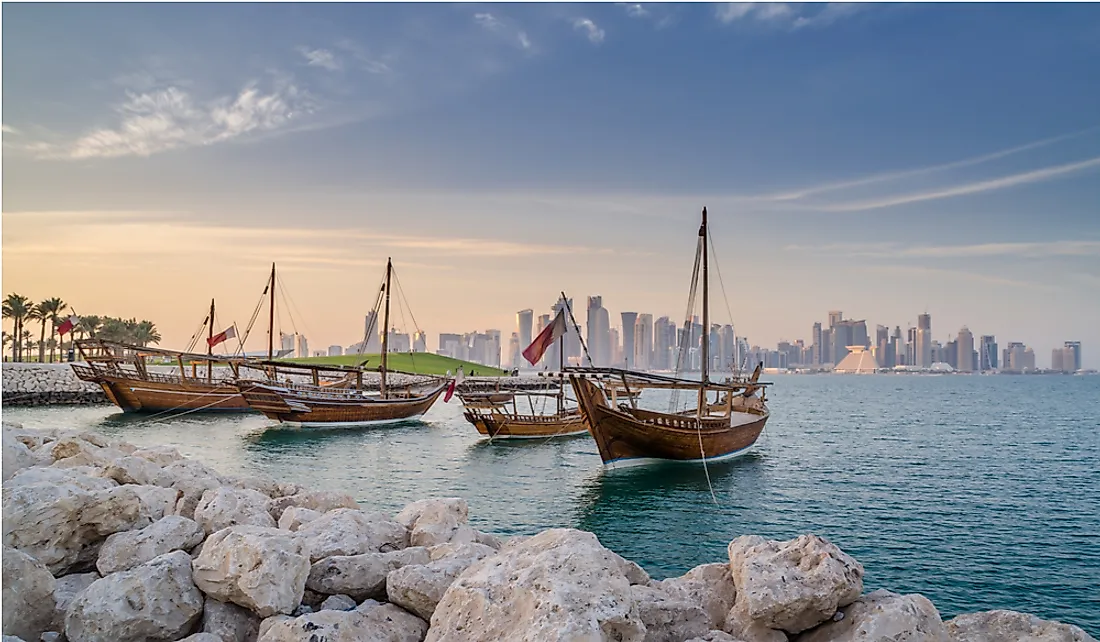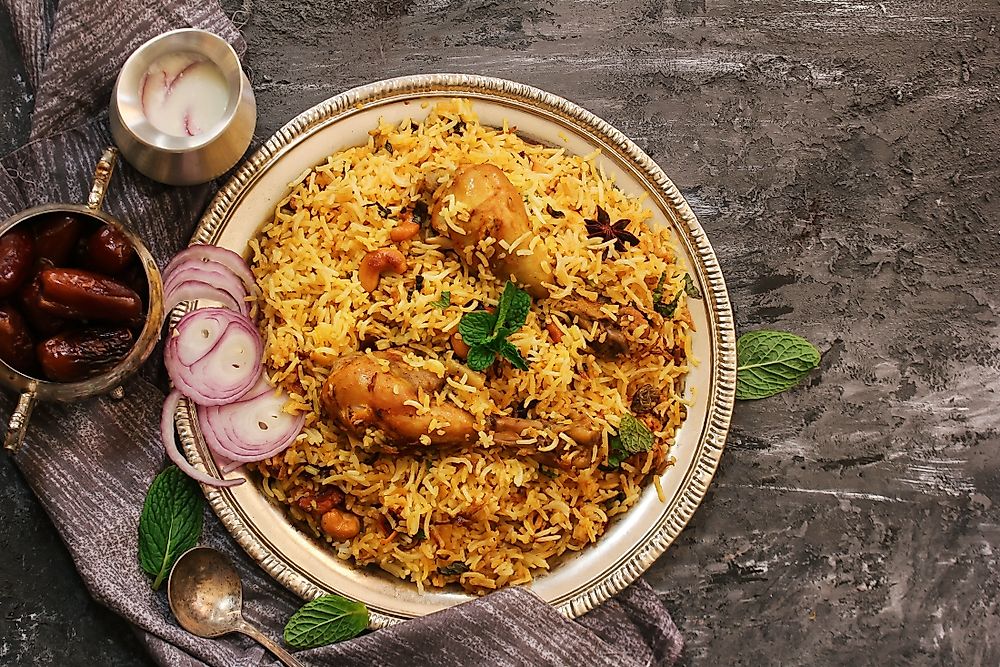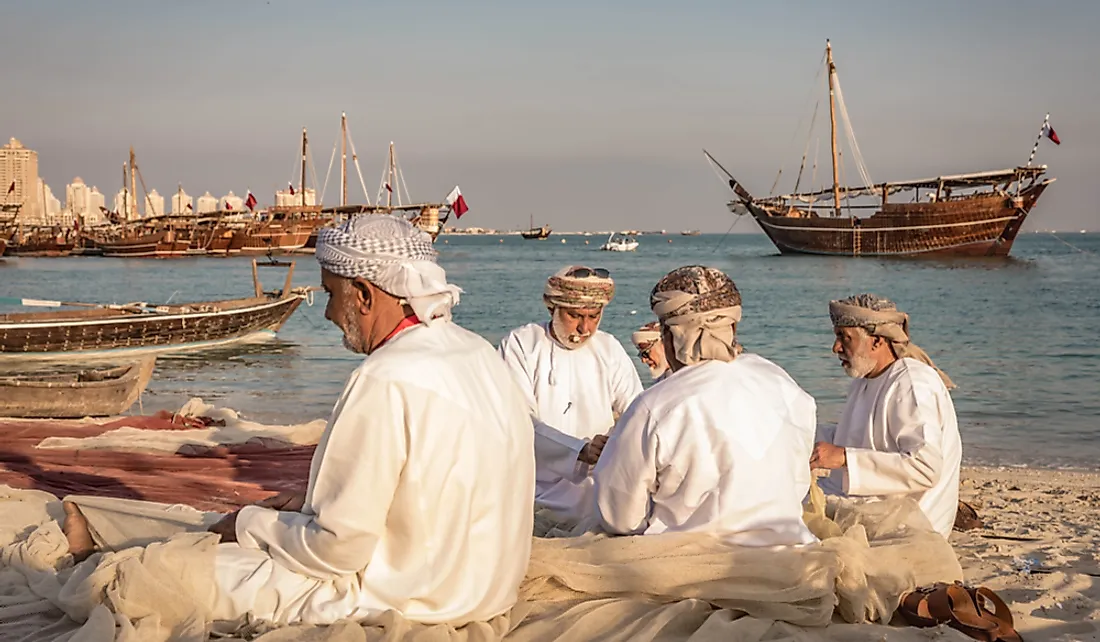The Culture Of Qatar

The Western Asian country of Qatar is located in the small Qatar Peninsula that is part of the larger Arabian Peninsula. Qatar hosts a population of around 2,363,569 inhabitants. Interestingly, the ethnic Qataris are a minority in the country as they comprise only about 11.6% of the total population. Islam is the religion of the majority in Qatar with Muslims accounting for 67.7% of the population. Christians, Hindus, and Buddhists account for 13.8%, 13.8%, and 3.1% of the population, respectively. The number of residents of Qatar fluctuates considerably depending on the season. The Qataris depend heavily on foreign skilled and unskilled labor for work. Thus, the majority of the country’s population (about 88.4%) comprises of migrant workers from various countries around the world.
6. Qatari Cuisine

The cuisine of Qatar reflects traditional Arab, Iranian, and Levantine cuisines. It is also significantly influenced by Indian cuisine. Since the Sharia law is applicable in the country, pork is banned from Qatar. The consumption and sale of alcohol are heavily regulated. Dates and seafood are staples of the Qatari diet. The national dish is called Machbūs. It is a meal comprising of rice, vegetables, and meat. Other traditional Qatari dishes include kasba (a dish similar to biryani), balalet (spicy noodles usually with an omelet on top), ghuzi (roast lamb served with rice), etc. Arabic coffee and karak (tea with a mixture of spices) are popular beverages. Hummus (a dip prepared by grinding chickpeas and sesame), motabel (a dip made of eggplant, sesame paste, and garlic), and nichee (hummus without sesame paste) are dips used in Qatari cuisine. Some of the traditional desserts are om ali (a rice and bread pudding), Mehalabiya (pistachio and rose water pudding), and sago (sweet gelatin pudding flavored with spices).
5. Clothing in Qatar
Men in Qatar wear the traditional thawb which is a long white shirt accompanied with white loose pants. The ghutra is a loose headdress worn by the men that are kept in place by a black rope called agal. Traditional Qatari women wear long black robes called the abayah and a headdress called the hijab. A burqa is worn by some women to conceal the face.
4. Qatari Literature
Qatari written literature developed only recently with the modern literature movement beginning in the late 20th century. Poetry in the form of verbal literature was, however, popular since the pre-Islamic times. Age-old traditions, beliefs, and folk tales were passed on through the generations via poetry. The development of the oil industry in the 20th century led to prosperity in the country and an increased level of literacy. The new changes ushered in a literary revolution. Both female and male writers have contributed to Qatari literature since then. Kaltham Jaber, a leading female Qatari writer, is famous for publishing a collection of short stories. Dalal Khalifa and Shu'a' Khalifa are famous Qatari novelists. The maritime novel of Al Qursan by Abdulaziz Al-Mahmoud received global recognition.
3. Folk Music and Dance in Qatar -

Qatari folk music is closely associated with the sea. Many folk songs are based on the pearl hunting activity of the people. A popular folkloric dance form of Qatar is Ardah. Here, two rows of men with or without swords face each other and dance to the music of drums and spoken poetry. Songs sung by women are generally related to their daily activities. Women would also sing about the hardships of pearl hunting when the pearl ships returned to harbor.
2. Sports in Qatar -
Football (soccer) is the most popular sport played in Qatar. Other sports like basketball, volleyball, camel and horse racing, cricket, swimming, etc., are also played in the country. The traditional Qatari games include taq taq taqiyyah, al dahroi, and al sabbah which are played by men. Traditional games for women include al laqfah, nat al habl, etc. Falconry, hunting, and some board games are other traditional Qatari games.
1. Life in a Qatari Society -
Women enjoy a certain degree of freedom in Qatar. Women can drive, travel solo, receive education, and hold jobs, freedoms which are often not enjoyed by women in some neighboring Arabic nations. Qatari women enter the workforce and obtain jobs mainly in government offices, and in education, health, social affairs sectors. However, despite these freedoms, gender bias can be seen in many aspects of life in a Qatari society, such bias is more pronounced in rural areas. Men engage more in the public sphere than women.
Most marriages in Qatar are arranged. Usually, such marriages take place between families with similar backgrounds or status in society. Since the Islamic religion allows polygyny, it is legally sanctioned in Qatar. However, the number of polygynous marriages have significantly dropped in the country. The higher costs of maintaining multiple households and better recognition of women’s rights are held responsible for such a trend. Divorce rates have also gone up with both men and women seeking a divorce.
Although the traditional Qatari households are extended or joint, nuclear families are also found in the present day. Preferences are still, however, given to living near the husband’s family by staying in a single extended household or family compounds with separate houses.
Children are considered an important part of marriage and family life. Childless couples often resort to medical aid to have children. In extreme cases, men may resort to polygyny or divorce to seek children from a new wife. The mother and other females in the family are usually assigned the task of childcare. Today, many Qatari households employ foreign nannies to take care of their children.
Although Qataris have a strong sense of family privacy, they always extend their hospitality to strangers. Visitors are offered food and beverages and a place to rest. However, they usually have separate guest areas where they host visitors. Such areas are separate from the regularly used family areas. Interaction and exchange of greetings between members of the opposite sex are usually reserved. The elderly people are given great respect and politely greeted by the younger generation.











